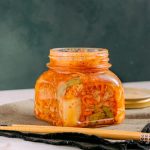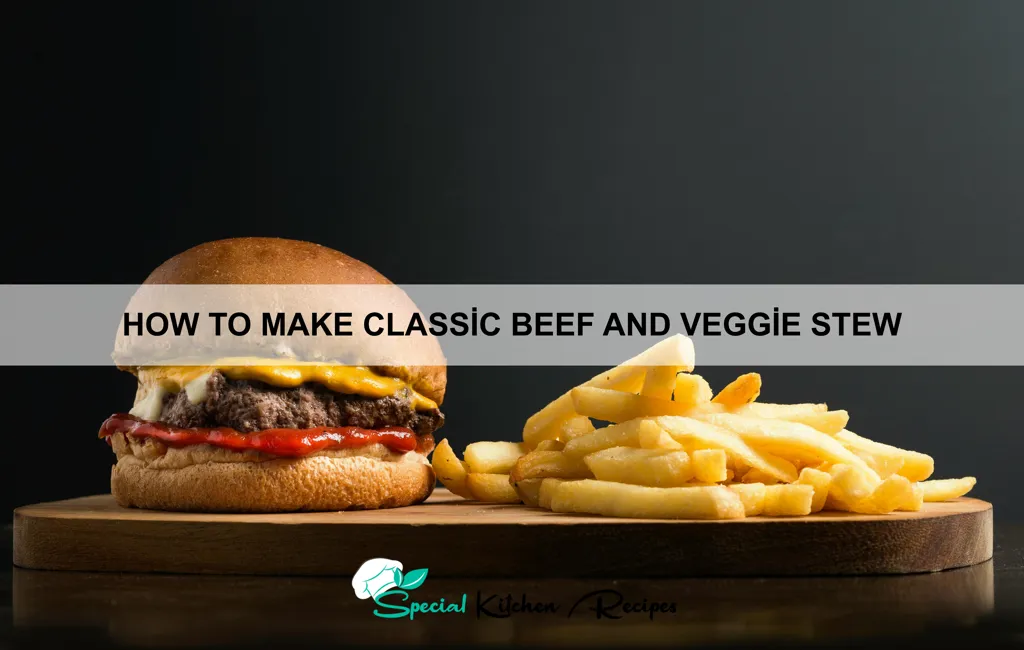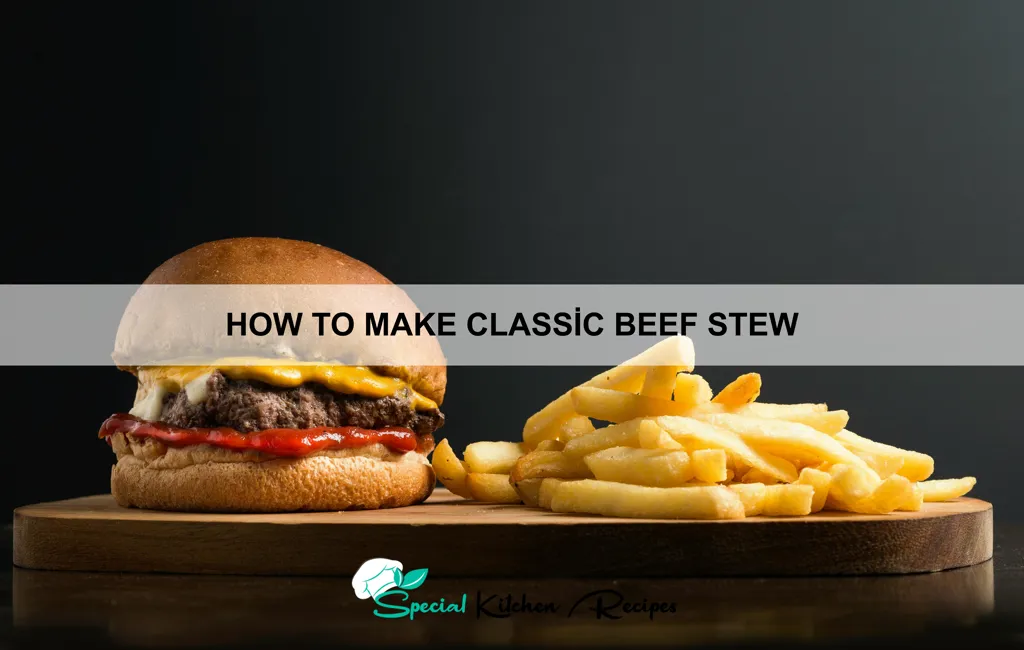Classic Hungarian Goulash, a culinary icon synonymous with Hungary itself, boasts a rich history far exceeding its simple ingredients. While many variations exist across the globe, the true Hungarian Goulash, or gulyás, originates from the herdsmen of the Hungarian puszta (plains). Its origins trace back centuries, with evidence suggesting a form of the dish existed as early as the 10th century, evolving alongside the nomadic lifestyle of these cattle herders. Initially, it wasn’t the rich, stew-like dish we know today, but rather a simple, hearty broth made with readily available ingredients – primarily beef, onions, and paprika.
The original gulyás was designed for practicality and sustenance. Prepared outdoors over open fires, it utilized readily available ingredients and was easily transportable, making it ideal for long periods spent tending to livestock. The paprika, a key ingredient integral to the dish’s flavor profile, arrived in Hungary from the Americas in the 16th century, profoundly impacting the stew’s development. This vibrant spice, now indelibly linked to Hungarian cuisine, transformed the simple broth into the flavorful goulash we recognize today. Over time, the recipe diversified, incorporating potatoes (introduced in the 18th century) and other vegetables, reflecting the changing agricultural landscape and culinary preferences.
Beyond its culinary significance, Hungarian Goulash holds deep cultural weight. It’s more than just a dish; it’s a symbol of Hungarian national identity and a testament to the country’s rich pastoral heritage. Its prevalence in Hungarian cuisine is undeniable; it’s a staple served in homes, restaurants, and even at national celebrations. Statistics indicate that goulash is among the most popular dishes in Hungary, with variations found across the country, each region showcasing its unique take on this classic recipe. Furthermore, it’s a dish that has transcended national boundaries, becoming a globally recognized representative of Hungarian gastronomy, enjoyed and adapted in countless kitchens worldwide.
The enduring popularity of Goulash highlights its ability to adapt while retaining its core identity. While countless variations exist, the essence remains: a hearty, flavorful stew that embodies the spirit of Hungarian culinary tradition. From humble beginnings as a simple herdsman’s meal, it has evolved into a celebrated national dish, a testament to the enduring power of simple ingredients and the rich history they can represent. Its story is a captivating blend of cultural evolution, agricultural innovation, and the enduring legacy of Hungarian culinary heritage.
Ingredients and Measurements
Creating an authentic Classic Hungarian Goulash hinges on the quality and precise measurement of your ingredients. Don’t be tempted to substitute key components, as each contributes uniquely to the rich, complex flavour profile. This recipe serves 6-8 generously.
Beef: 2 lbs (900g) beef stew meat, cut into 1-inch cubes is essential. Choose a cut with good marbling, such as chuck roast or beef shank, for maximum tenderness and flavour development during the long simmer. Avoid leaner cuts, as they can become tough. Trim away any excess fat, but don’t remove all of it, as some fat contributes to the richness of the goulash.
Onion: 2 large yellow onions, finely chopped. The onion forms the base of the flavour, so use a good quality, flavorful onion. Finely chopping allows for even caramelization and prevents large chunks from dominating the texture.
Paprika: 2 tablespoons sweet Hungarian paprika and 1 tablespoon hot Hungarian paprika. This is crucial. Hungarian paprika is distinct from other paprikas; its flavour is sweeter and more complex. The combination of sweet and hot paprika provides a balanced flavour profile. If you can only find one type, start with sweet and adjust to your preference.
Other Spices: 1 teaspoon caraway seeds, 1 teaspoon marjoram, ½ teaspoon ground cumin, ½ teaspoon black pepper, 1 bay leaf. These spices add depth and complexity to the goulash. Toasting the caraway seeds lightly in a dry pan before adding them enhances their aroma. Feel free to experiment slightly with the spice quantities based on your taste.
Tomatoes: 1 (28 ounce) can crushed tomatoes or 2 cups roughly chopped fresh tomatoes. Crushed tomatoes are traditional, but fresh tomatoes offer a brighter flavour. If using fresh tomatoes, you may want to add a pinch of sugar to balance the acidity.
Liquid: 2 cups beef broth or water. Beef broth adds significantly to the depth of flavour, but water is a suitable substitute if needed. You might need to add more liquid during the cooking process, depending on your stove and the type of pot you are using.
Other Ingredients: 2 tablespoons vegetable oil or lard (for authentic flavour), 2-3 medium carrots, peeled and chopped into ½-inch pieces, 2-3 medium potatoes, peeled and chopped into ½-inch pieces, 2 tablespoons tomato paste (optional, adds richness), 1 tablespoon sugar (optional, to balance acidity if using fresh tomatoes), Salt and freshly ground black pepper to taste.
Note: Adjust the quantities of carrots and potatoes according to your preference. Some prefer a thicker goulash with more vegetables, while others prefer a richer, meat-centric version. Always taste and adjust seasonings throughout the cooking process to achieve your desired flavour balance.
Preparation of Ingredients
The success of a Classic Hungarian Goulash hinges significantly on the meticulous preparation of its ingredients. Proper chopping techniques and browning of the meat are crucial for developing the rich, deep flavour this dish is known for. We’ll begin with the meat, the heart of the goulash.
Browning the Beef: For this recipe, we’ll use approximately 1.5 kg (3.3 lbs) of beef chuck, cut into 2-3 cm (1-1.25 inch) cubes. It’s vital to use a good quality, flavorful cut of beef as this will directly impact the final taste of your goulash. Before browning, pat the beef cubes dry with paper towels. This helps achieve a good sear and prevents steaming, which can lead to a less flavorful result. Work in batches to avoid overcrowding the pan, ensuring each cube has ample surface area contact with the hot pan.
Heat approximately 2 tablespoons of high-smoke-point oil (such as canola or vegetable oil) in a large, heavy-bottomed pot or Dutch oven over medium-high heat. Once the oil shimmers, add the beef cubes in batches, ensuring not to overcrowd the pot. Brown the beef on all sides, approximately 3-4 minutes per batch, until a deep brown crust forms. Remove the browned beef from the pot and set aside. This browning step is essential for developing a complex flavour profile and beautiful colour in your goulash.
Chopping the Vegetables: Next, we prepare the vegetables. The precise chopping style is not critical, but consistency in size is beneficial for even cooking. We’ll need the following: 2 large onions (finely chopped), 2-3 red bell peppers (cored, seeded and diced into approximately 1cm pieces), 2 carrots (peeled and diced into approximately 1cm pieces), and 2 celery stalks (diced into approximately 1cm pieces). Use a sharp knife for efficient and safe chopping. The onions should be finely chopped to allow them to soften and caramelize during the cooking process. The other vegetables should be diced into roughly uniform pieces to ensure they cook evenly.
Optional additions and considerations: Some recipes include garlic, smoked paprika, or other aromatics at this stage. If using garlic, add 4-6 cloves, minced, towards the end of the vegetable browning process to prevent burning. Remember to adjust the quantity of vegetables according to your preference and the size of your pot. Overcrowding the pot will hinder proper browning of the vegetables and may result in steaming rather than sautéing.
Once the vegetables are chopped, you are ready to proceed with the next stage of the goulash recipe, which involves sautéing the vegetables and building the flavour base. Properly prepared ingredients are the foundation of an authentic and delicious Hungarian Goulash. Remember to maintain a clean and organized workspace for efficient food preparation.
Cooking the Goulash (including searing, simmering, and thickening techniques)
Now that we’ve prepared our ingredients, let’s delve into the heart of making a truly classic Hungarian Goulash. This process involves three key stages: searing, simmering, and thickening. Each step is crucial for achieving the rich, deep flavor and perfect consistency we aim for.
Searing the Meat: Begin by generously salting and peppering approximately 1.5 kg (3.3 lbs) of beef chuck, cut into 2-3 cm (1-1.2 inch) cubes. High heat is essential here. Use a large, heavy-bottomed pot or Dutch oven, preferably cast iron, to ensure even browning. Add 2 tablespoons of high-smoke-point oil (like canola or vegetable oil) to the pot and heat it until it shimmers. Work in batches to avoid overcrowding the pot, which will lower the temperature and result in steaming instead of searing. Sear the beef cubes on all sides until they develop a deep brown crust. This crucial step builds flavor and depth. Remove the seared beef from the pot and set it aside.
Building the Flavor Base: With the beef removed, add 2 large chopped onions (approximately 500g) to the pot and cook over medium heat until softened and lightly caramelized, about 10-15 minutes. Don’t rush this stage; the sweet caramelization of the onions is fundamental to the goulash’s flavor profile. Next, add 2-3 tablespoons of sweet paprika (Hungarian paprika is preferred for its richer flavor), 1 tablespoon of hot paprika (use with caution, adjusting to your spice preference), and 1 teaspoon of caraway seeds. Cook for another minute or two, stirring constantly, to toast the spices and release their aroma. This step enhances the overall flavor complexity.
Simmering the Goulash: Return the seared beef to the pot. Add 1.5 liters (6 cups) of beef broth, 250g (1 cup) of diced carrots, 250g (1 cup) of diced potatoes (potatoes are traditionally added later in the process to maintain their texture), 2 bay leaves, and 1 teaspoon of marjoram. Bring the mixture to a simmer, then reduce the heat to low, cover, and let it simmer gently for at least 2-3 hours, or even longer (up to 4-5 hours for an exceptionally tender goulash). Low and slow is key. The longer it simmers, the more the flavors meld together. Stir occasionally and check the liquid level; add more broth if necessary to prevent the goulash from drying out.
Thickening the Goulash: After the long simmer, the goulash should be richly flavored and tender. If you prefer a thicker consistency, you have a few options: you can blend about 1/3 of the goulash with an immersion blender, then stir it back into the pot. Alternatively, you can make a roux by melting 2 tablespoons of butter in a separate pan, whisking in 2 tablespoons of all-purpose flour, and cooking for a minute or two until lightly golden. Gradually whisk the roux into the goulash, stirring constantly, until it reaches your desired thickness. Avoid over-thickening, as it can result in a pasty texture. Season to taste with salt and pepper before serving.
Serving Suggestions: Serve your Classic Hungarian Goulash hot with crusty bread or dumplings (nokedli). Garnish with fresh parsley and a dollop of sour cream, if desired. Enjoy!
Flavor Building (Spices, Herbs, and Their Addition Timing)
The magic of Hungarian Goulash lies not just in the meat and paprika, but in the careful layering of flavors through the strategic addition of spices and herbs. Timing is crucial; adding spices too early can lead to bitterness, while adding them too late prevents them from fully developing their aroma and infusing the dish.
We’ll begin with the foundational spice: paprika. For a truly authentic Goulash, use a blend of sweet and hot paprika. A good starting point is 2 tablespoons of sweet paprika and 1 tablespoon of hot paprika (adjust to your spice preference). Add this early, directly to the meat during the initial browning stage. This allows the paprika to toast slightly, deepening its flavor and creating a richer, more complex base for the stew. Don’t be afraid to let the paprika bloom in the hot pan for a minute or two before adding the onions.
Next, we introduce the aromatics. Finely chop 2 medium onions and add them to the pot after browning the meat. Cook the onions until softened and translucent, approximately 5-7 minutes. This step is essential for building a sweet and savory base that complements the paprika.
Now, it’s time for the supporting spices. Add 1 teaspoon of ground caraway seeds and 1/2 teaspoon of marjoram. Caraway provides a warm, earthy note that perfectly balances the paprika’s intensity, while marjoram adds a slightly herbaceous touch. These spices should be added along with the onions and cooked gently for another 2-3 minutes to release their aroma. Overcooking can lead to bitterness, so be mindful of the heat.
Garlic is a crucial component, adding a pungent depth to the flavor profile. Add 2-3 cloves of minced garlic to the pot alongside the caraway and marjoram. Cook for just a minute, being careful not to burn it, as burnt garlic will impart a bitter taste. A little goes a long way with garlic, so don’t be tempted to add too much.
For a touch of freshness and brightness, we’ll incorporate fresh herbs towards the end of the cooking process. About 30 minutes before the Goulash is finished, add a generous handful of chopped fresh parsley (approximately 1/4 cup) and a sprig of fresh thyme. These fresh herbs add a vibrant, aromatic finish that complements the other flavors without overpowering them. Avoid adding fresh herbs too early, as they tend to lose their color and flavor with prolonged cooking.
Finally, season generously with salt and freshly ground black pepper throughout the cooking process. Taste and adjust seasoning as needed. Remember that the flavors will meld and deepen as the Goulash simmers, so don’t be shy with the seasoning, but also don’t over-salt. A pinch of sugar can also help balance the acidity of the tomatoes, if using canned tomatoes.
By following this precise timing and layering of spices and herbs, you’ll achieve a deep, complex, and authentic flavor profile in your Hungarian Goulash, a dish renowned for its rich and satisfying taste.
Checking for Doneness
Achieving the perfect doneness in Classic Hungarian Goulash is crucial to its rich flavor and tender texture. It’s a slow-cooked dish, and rushing the process will result in tough meat and an underdeveloped sauce. Therefore, checking for doneness requires patience and attention to detail. We’ll focus on three key aspects: the meat, the vegetables, and the sauce.
Checking the Meat: The beef should be incredibly tender, almost falling apart. After approximately 2-3 hours of simmering (depending on the cut of beef and the size of the chunks), you can begin testing for doneness. Use a fork to gently pierce the largest piece of beef. If the fork slides in easily with minimal resistance, and the meat separates easily, it’s likely done. If there’s still significant resistance, continue simmering in 30-minute intervals, checking again each time. Remember, overcooked beef can become dry and tough, so it’s better to err on the side of slightly underdone than overdone. A good indication is that the beef should easily shred with a fork.
Checking the Vegetables: The vegetables, particularly the onions and paprika, should be completely softened and tender. The onions should have lost their sharp bite and integrated seamlessly into the rich sauce. They should be meltingly soft, almost dissolving when you press them with a spoon. If the onions still have a firm texture, continue simmering for another 15-20 minutes. The potatoes, if added, should be cooked through and easily mashed with a fork. Avoid overcooking the potatoes, as they can become mushy. Aim for a tender but still slightly firm texture.
Checking the Sauce: The sauce is the heart of the goulash, and its consistency is vital. It should be richly colored, deeply flavorful, and have a slightly thickened consistency, clinging to the meat and vegetables. Avoid a watery sauce, as this indicates insufficient simmering time. If the sauce is too thin, you can gently simmer it uncovered for another 15-20 minutes to reduce the liquid. Be mindful not to burn the sauce during this process. You can also use a cornstarch slurry (1 tablespoon cornstarch mixed with 2 tablespoons cold water) to thicken the sauce if needed. Add the slurry gradually, stirring constantly, until the desired consistency is reached. Taste the sauce frequently to adjust seasoning as needed. A perfectly balanced goulash should have a harmonious blend of sweet, savory, and slightly spicy notes.
Important Note: The cooking time will vary depending on factors such as the cut of beef used, the size of the chunks, and the heat of your stovetop. Always rely on the texture and appearance of the meat, vegetables, and sauce as the ultimate indicators of doneness. Don’t strictly adhere to a specific timeframe; instead, use your senses and experience to determine when your goulash is perfectly cooked.
Once you’ve achieved the desired doneness, remove the goulash from the heat and let it rest for at least 15-20 minutes before serving. This allows the flavors to meld and intensify, resulting in an even more delicious and satisfying goulash.
Serving Suggestions (with Traditional Sides)
Classic Hungarian Goulash, rich and deeply flavorful, deserves to be served with complementary sides that enhance its hearty nature without overpowering its unique taste. The ideal accompaniments should balance the richness of the stew with contrasting textures and flavors.
Noodle-based sides are a quintessential pairing. Traditional Hungarian options include nokedli (small egg dumplings), which offer a delightful soft texture that contrasts beautifully with the tender beef and robust sauce. You can prepare approximately 1 pound of nokedli, enough for 4-6 servings, using a simple recipe of eggs, flour, and a pinch of salt – knead until smooth, roll out thinly, and cut into small pieces before boiling until they float to the surface. Alternatively, galuska, small boiled dumplings, can also be used, offering a similar textural contrast. Aim for about 1 cup of cooked galuska per serving.
Another classic side is spaetzle, soft egg noodles that soak up the goulash beautifully. Similar to nokedli, spaetzle provides a lovely soft counterpoint to the stew’s hearty texture. For 4-6 servings, you can prepare around 1 pound of spaetzle using a traditional spaetzle maker or a simple grater method. Remember to cook them until tender but not mushy.
For a more substantial side, consider serving your goulash with kifőzött burgonya (boiled potatoes). About 1-1.5 pounds of potatoes, peeled and cubed, boiled until tender, makes a perfect accompaniment. The fluffy potatoes absorb some of the rich gravy, adding another layer of flavour. Avoid over-seasoning the potatoes, letting the goulash’s rich flavor take center stage.
Bread is an essential element, providing a vehicle for sopping up the delicious sauce. A crusty sourdough bread or a simple, soft roll works wonderfully. For 4-6 servings, provide at least one loaf of bread, or a basket of 6-8 rolls.
Beyond the traditional choices, you can experiment with other sides that complement the rich flavors of the goulash. A simple green salad with a light vinaigrette can provide a refreshing counterpoint to the richness. Alternatively, a side of sauerkraut adds a tangy dimension that cuts through the richness of the meat and sauce. However, when adding non-traditional sides, be mindful of not overpowering the delicate balance of the goulash itself.
Presentation is key. Serve the goulash in a large, rustic bowl, allowing the rich color and texture to shine. Arrange the sides artfully around the bowl, creating a visually appealing and appetizing presentation. Garnish with fresh parsley for a pop of color and freshness.
Remember to adjust the quantities of the sides according to the number of servings and the appetites of your guests. Enjoy your delicious and authentic Hungarian Goulash experience!
Classic Hungarian Goulash: Recommendations
To fully appreciate the rich flavors of your Classic Hungarian Goulash, we recommend the following:
Serving Suggestions: For the most authentic experience, serve your goulash piping hot, ideally in a rustic bowl. Consider serving it with a dollop of sour cream or plain yogurt on top to add a creamy contrast to the hearty stew. A sprinkle of fresh parsley adds a pop of color and freshness. Traditional accompaniments include dumplings (nokedli) or spaetzle, which soak up the delicious gravy. Alternatively, serve it with crusty bread for dipping into the flavorful sauce. For a complete meal, consider adding a side of steamed green beans or a simple salad with a light vinaigrette to balance the richness of the goulash.
Storage Conditions: Proper storage is crucial to maintaining the quality of your goulash. Allow the goulash to cool completely before storing it in airtight containers. This prevents bacterial growth and maintains the freshness of the flavors. Refrigerate the goulash for up to 3 days. For longer storage, freeze the goulash in airtight containers or freezer bags. Frozen goulash can last for up to 3 months. When reheating, thaw overnight in the refrigerator and gently reheat on the stovetop or in the microwave, ensuring it reaches a safe internal temperature. Avoid repeated freezing and thawing.
Complementary Dishes: To create a truly memorable Hungarian feast, consider pairing your goulash with other traditional dishes. A simple cucumber salad provides a refreshing counterpoint to the richness of the goulash. Potato pancakes (krumpli palacsinta) or potato dumplings are also excellent side dishes, offering a comforting and satisfying accompaniment. For dessert, a slice of Dobos torte or a creamy túró rudi (cottage cheese dessert) provides a sweet ending to your meal. A glass of dry red wine, such as a Cabernet Franc or Merlot, is a perfect pairing that complements the deep, savory flavors of the goulash.
Nutritional Information (per serving, approximate values will vary based on recipe and ingredients): Calories: 400-500 calories, Protein: 25-35 grams, Fat: 20-30 grams, Carbohydrates: 30-40 grams. Note: This is an estimate and the actual nutritional content may vary depending on the specific ingredients used and portion size. For a healthier version, consider using leaner cuts of beef, reducing the amount of oil used in cooking, and increasing the proportion of vegetables.
Important Note: While this nutritional information is a guideline, it’s always best to calculate the precise values based on your specific recipe and ingredients using a nutrition calculator. Adjust seasonings to your preference. Enjoy your delicious and authentic Classic Hungarian Goulash!





